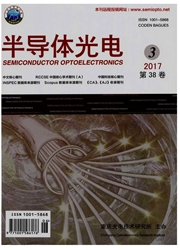

 中文摘要:
中文摘要:
作为自动交换全光网络中的核心器件,全光波长转换器的实用化研究一直是目前的热点问题。基于半导体激光器实现波长转换的理论模型,利用速率方程讨论了光子寿命对不同半导体激光器实现波长转换特性的影响。通过两组实验,验证了具有不同光子寿命的光纤光栅外腔半导体激光器(FBG-ECL)和分布反馈半导体激光器(DFB-LD),在实现波长转换速率及消光比等方面的差异,实验结果和仿真基本吻合。得出结论:优化半导体激光器结构,减小光子寿命对实现高速全光波长转换有重要参考价值。
 英文摘要:
英文摘要:
As the key apparatus in ASON(Automatic Switched Optical Networks), the All Optical Wavelength Conversion (AOWC) device will take a very important effect. In this paper, based on the theoretical model of wavelength conversion in semiconductor laser, the influence of different photons life on wavelength conversion is discussed hy utilizing rate equation under the small-signal analysis. Using FBG-ECL (Fiber Bragg Grating External Cavity semiconductor Laser) and DFB-LD (Distributed FeedBack-Laser Diode), the characteristics of wavelength conversion are discussed and analyzed by experiments in different signal rate and extinction ratio. The result is accordant with theoretical analysis. In conclusion,optimizing semiconductor laser's structure, and reducing photons life are very important to realize high speed all optical wavelength conversion.
 同期刊论文项目
同期刊论文项目
 同项目期刊论文
同项目期刊论文
 Influence of the modulation index of Mach-Zehnder modulator on RoF link with ASK millimeter-wave sig
Influence of the modulation index of Mach-Zehnder modulator on RoF link with ASK millimeter-wave sig 155 Mb/s-10 Gb/s combined FSK-IM/optical label-packet modulation signals 100 km transmission over st
155 Mb/s-10 Gb/s combined FSK-IM/optical label-packet modulation signals 100 km transmission over st A novel scheme of two-dimension time-stacked wavelength-time optical code label for optical packet s
A novel scheme of two-dimension time-stacked wavelength-time optical code label for optical packet s Investigation of the influence of key parameters on system performance in all-optical label switchin
Investigation of the influence of key parameters on system performance in all-optical label switchin 期刊信息
期刊信息
